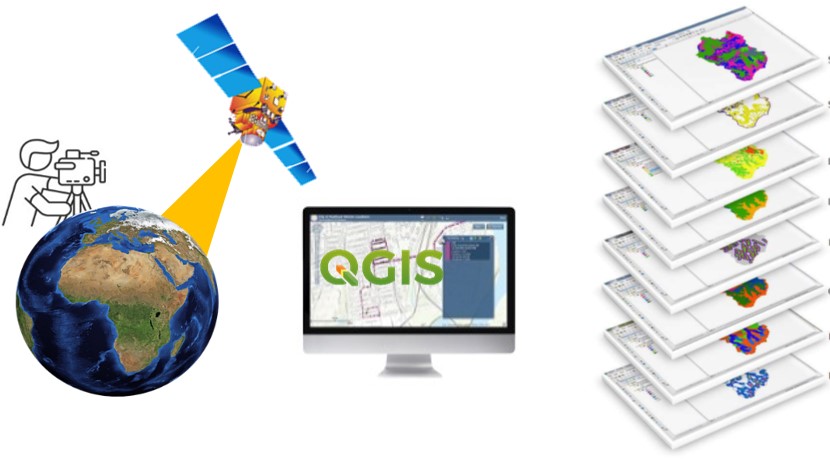Six Sigma uses statistics to analyse data and reduce errors in data analysis. Six Sigma is a data-driven methodology to improve quality, equivalent to 3.4 defects per million opportunities, thereby eliminating all the process variation. Six Sigma uses different tools to improve processes, statistical process control, failure mode and effects analysis. Six Sigma is a widely adopted methodology used in various industries like manufacturing and service, as well as lean manufacturing. Six Sigma was developed by Motorola in the mid-1980s and popularized by Generic Electric in the 1990s.

Lean six sigma- White Belt
Last Updated: 2022-04-25
Start your lean six sigma journey here
Digital transformation and technical implementation are necessary to keep up with the pacing developments in the service and production centre and to keep up with the speed, tools are necessary for quality control and business transformation, and this concept of the quality management process is produced by Six Sigma as the final product.
Statistical Six Sigma Tools:
Six Sigma is derived from the bell curve in statistics- if the process has six sigmas, three above and below the mean, the defect rate is extremely low. Wherever the mean is at least 6 sigma away from the closest specification limit, it is aimed at six sigma. Some of the statistical tools used are:
- Statistical Process Control monitors a process by identifying when the process is getting defective and tries to control when defective products or services are produced.
- Control Charts represent process performance over time, and identity the natural variation in the process.
- Design of Experiments identifies the effects of factors on a process and the interactions to optimise the process performance.
- Process Capability Analysis determines how to enable the process output to meet customer specifications, measures the distribution of process output and compares how many requirements of the customers are met.
Six Sigma Methodologies:
Six Sigma is a data-driven methodology to eliminate defects in a process. The two main methodologies that use statistical and quality tools to solve problems in a process are:
- DMAIC stands for Define, Measure, Analyse, Improve and Control to improve existing processes and used to meet customer’s requirements and detect significant errors. First, define the problem and scope of the project, second, measure the performance of the process, analyse data to understand the problem and the variations, implement solutions for improvement, and control the process for improvements.
- DMADV stands for Define, Measure, Analyse, Design and Verify. A similar process to DMAIC, only that it designs a new process or product to meet customer expectations, and verifies the performance of the process.
What is Lean Sigma?
Lean Sigma combines Lean and Six Sigma Methodologies. Lean is a process improvement methodology, that eliminates waste and non-value activities in the process. Lean Sigma is a result of combining them to improve the speed of a process and uses DMAIC for its methodology. Some of the tools used in Lean Sigma to identify waste, reduce variation, and improve process performance are:
- Value Stream Mapping
- Kaizen
- Poka-Yoke
- 5S
- Statistical Process Control
- Process Capability Analysis
Lean Sigma attempts to deliver high-quality products and services to the customer in a timely and cost-effective manner.
Six Sigma Levels:
The different levels of Six Sigma certification based on the level of expertise (like in karate) require demonstration of practical application in the methodology. The different levels of six sigma certification to produce high-quality products and eradicate defects are:
- White Belt: The White Belt is the entry-level certification for Six Sigma. It provides a basic understanding of the methodology and its tools and techniques.
- Yellow Belt: The Yellow Belt certification provides a more in-depth understanding of Six Sigma and its tools and techniques. Yellow Belts generally work on Six Sigma projects as team members.
- Green Belt: The Green Belt certification provides a thorough understanding of Six Sigma and its tools and techniques. Green Belts lead Six Sigma projects and work with Black Belts to implement process improvements.
- Black Belt: The Black Belt certification provides an advanced understanding of Six Sigma and its tools and techniques. Black Belts are responsible for leading Six Sigma projects, training and mentoring Green Belts, and driving process improvements in an organization.
- Master Black Belt: The Master Black Belt is the highest level of Six Sigma certification. It provides an expert understanding of Six Sigma and its tools and techniques. Master Black Belts are responsible for leading multiple Six Sigma projects, developing and implementing Six Sigma strategies, and coaching and mentoring Black Belts and Green Belts.
Learnfly offers several professional courses to develop 6 Sigma skills and produce high-quality services and eliminate defects. Enrol today, and be ahead of the herd.

























